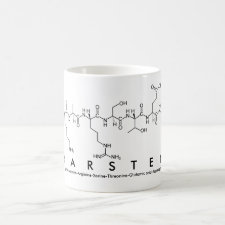
Authors: Haupt K, Mosbach K
Article Title: Binding assays for drugs and herbicides using molecularly imprinted polymer particles as recognition elements in different assay formats.
Publication date: 1997
Journal: Abstracts of Papers of the American Chemical Society
Volume: 213
Issue: (IEC)
Page numbers: 32.
Abstract: Molecular imprinting technology has been successfully applied to create recognition sites for certain target molecules in synthetic polymers. The resulting molecularly imprinted materials have been used as stationary phases for chromatographic separation of molecules with closely related structures (e.g., optical isomers), as recognition elements in sensors, in catalytic applications or, instead of antibodies, in immunoassay-type analyses (see Mosbach, K. and Ramström, 0. 1996, The emerging technique of molecular imprinting and its future impact on biotechnology, Bio/Technology 14, 163). The latter application appears especially promising as synthetic polymers can he imprinted with compounds against which it is difficult or impossible to raise natural antibodies, e.g., small or non-immunogenic molecules, immunosuppressive drugs, etc. This presentation will include recent developments of assay systems for drugs and herbicides for medical and environmental analyses and their use in water-based and organic solvents. In addition to the "conventional" radioligand binding assay, new assay formats that avoid the use of radiolabelled compounds will be described



Join the Society for Molecular Imprinting

New items RSS feed
Sign-up for e-mail updates:
Choose between receiving an occasional newsletter or more frequent e-mail alerts.
Click here to go to the sign-up page.
Is your name elemental or peptidic? Enter your name and find out by clicking either of the buttons below!
Other products you may like:
 MIPdatabase
MIPdatabase









